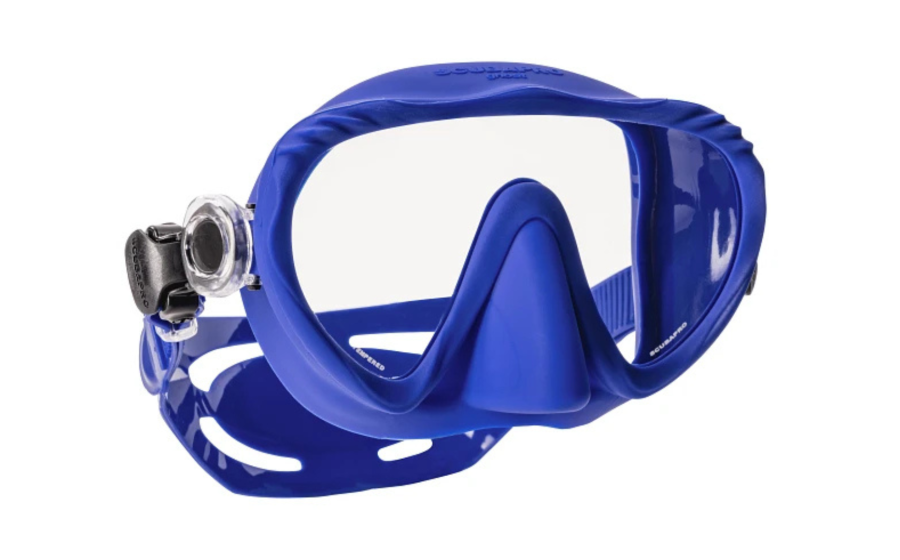Balanced vs Unbalanced Regs: Does It Make a Difference?

Balanced vs Unbalanced Regs
Lane DuPont
One of the features mentioned in ScubaLab’s regulator tests is whether the first and/or second stages are “balanced.” In recent years, the terms “overbalanced” and “hyperbalanced” have popped up as well, adding to the sometimes confusing mix of features to evaluate before choosing a regulator. We won’t get into detailed technical aspects, and this explanation doesn’t cover every reg in the market, but here’s a simplified explanation.
Balanced First Stage
It’s all about the springs when discussing the difference between balanced and unbalanced first stages. With both piston and diaphragm regs, there’s a high-pressure valve and seat assembly and a spring. An unbalanced reg basically has a different pressure on each end of this valve-spring assembly that causes varying effort to overcome the force of the spring as conditions change — such as change in depth or tank pressure. This translates as variations in the medium pressure traveling through the hose to the second stage, resulting in harder breathing effort at depth or low tank pressure. A balanced first stage routes medium pressure air to both sides of the valve-spring assembly, so that the effort to move the spring is consistent and unaffected by variations in external conditions, giving the diver unvarying pressure to the second stage and consistent breathing effort.
Over-Balanced First Stage
This is a bit of technical wizardry performed by some manufacturers allowing a first stage to slowly increase its medium pressure output as ambient pressure increases (you’re going deeper) instead of keeping it constant. The advantage is that the relative volume of air supplied to the second stage is greater as you go deeper, theoretically making breathing easier. A nice bonus on those deep wreck dives.
Balanced Second Stage
In oversimplified terms, a typical second stage has at its heart a valve and a spring, much like the first stage. When a diver inhales on a regulator, the inhalation effort opens a valve that is closed by the tension of a spring. Balancing a second stage is accomplished by routing medium pressure air to the backside of the valve to help counteract the force of the spring. This allows the valve to open with less effort, making the reg breathe easier under heavier demand, such as the higher pressures at depth.
The Bottom Line
If balancing makes things so much easier for the diver, why isn’t every regulator manufactured that way? One reason is cost. If you open a reg and look inside, the parts are tiny and precision made. Balancing adds a layer of complexity to the manufacturing process that translates into higher cost. Another reason is that not everyone needs a balanced regulator. As our tests prove, an unbalanced system can perform very well in entry-level diving scenarios. Purchasing a balanced first stage paired with an unbalanced second stage can often provide a good balance of performance at a reduced cost to the budget-conscious diver.

Lane DuPont
One of the features mentioned in ScubaLab’s regulator tests is whether the first and/or second stages are “balanced.” In recent years, the terms “overbalanced” and “hyperbalanced” have popped up as well, adding to the sometimes confusing mix of features to evaluate before choosing a regulator. We won’t get into detailed technical aspects, and this explanation doesn’t cover every reg in the market, but here’s a simplified explanation.
Balanced First Stage
It’s all about the springs when discussing the difference between balanced and unbalanced first stages. With both piston and diaphragm regs, there’s a high-pressure valve and seat assembly and a spring. An unbalanced reg basically has a different pressure on each end of this valve-spring assembly that causes varying effort to overcome the force of the spring as conditions change — such as change in depth or tank pressure. This translates as variations in the medium pressure traveling through the hose to the second stage, resulting in harder breathing effort at depth or low tank pressure. A balanced first stage routes medium pressure air to both sides of the valve-spring assembly, so that the effort to move the spring is consistent and unaffected by variations in external conditions, giving the diver unvarying pressure to the second stage and consistent breathing effort.
Over-Balanced First Stage
This is a bit of technical wizardry performed by some manufacturers allowing a first stage to slowly increase its medium pressure output as ambient pressure increases (you’re going deeper) instead of keeping it constant. The advantage is that the relative volume of air supplied to the second stage is greater as you go deeper, theoretically making breathing easier. A nice bonus on those deep wreck dives.
Balanced Second Stage
In oversimplified terms, a typical second stage has at its heart a valve and a spring, much like the first stage. When a diver inhales on a regulator, the inhalation effort opens a valve that is closed by the tension of a spring. Balancing a second stage is accomplished by routing medium pressure air to the backside of the valve to help counteract the force of the spring. This allows the valve to open with less effort, making the reg breathe easier under heavier demand, such as the higher pressures at depth.
The Bottom Line
If balancing makes things so much easier for the diver, why isn’t every regulator manufactured that way? One reason is cost. If you open a reg and look inside, the parts are tiny and precision made. Balancing adds a layer of complexity to the manufacturing process that translates into higher cost. Another reason is that not everyone needs a balanced regulator. As our tests prove, an unbalanced system can perform very well in entry-level diving scenarios. Purchasing a balanced first stage paired with an unbalanced second stage can often provide a good balance of performance at a reduced cost to the budget-conscious diver.






